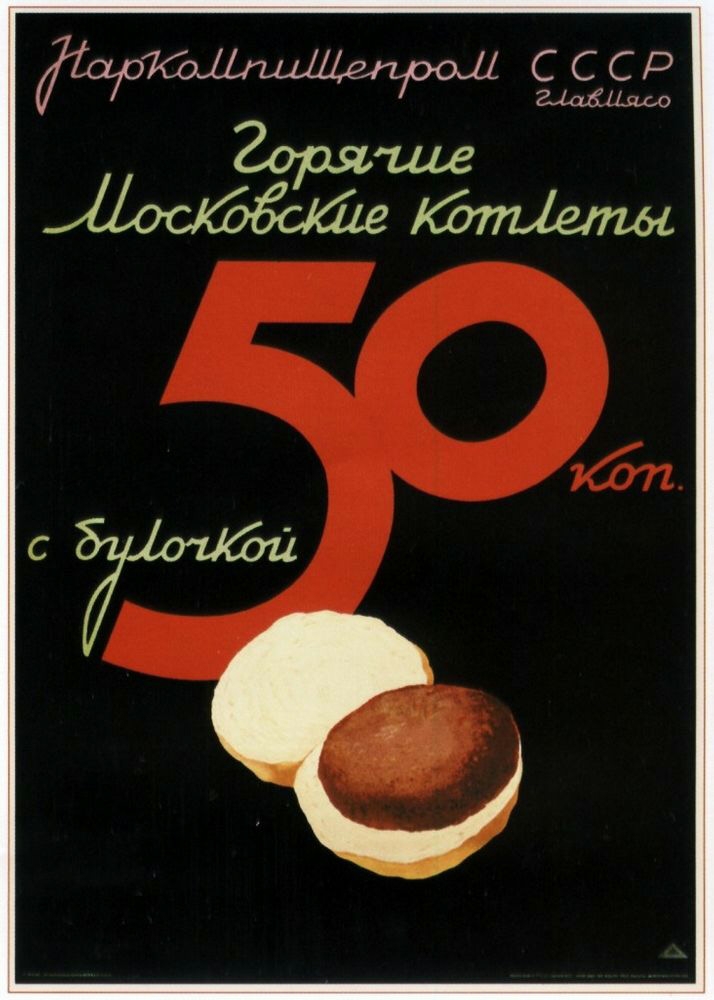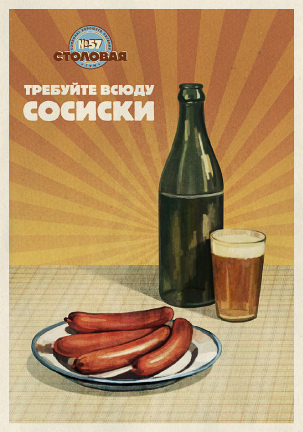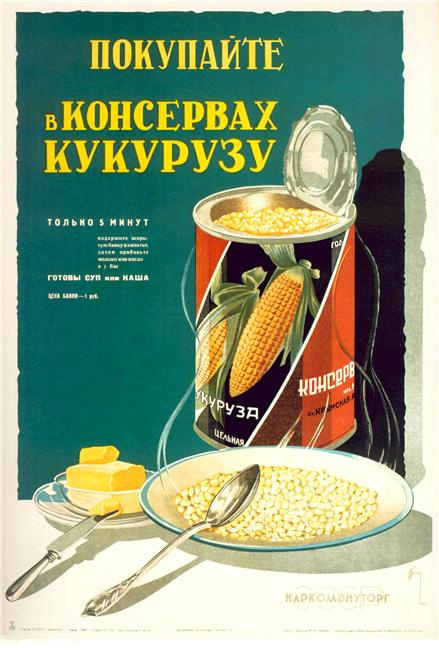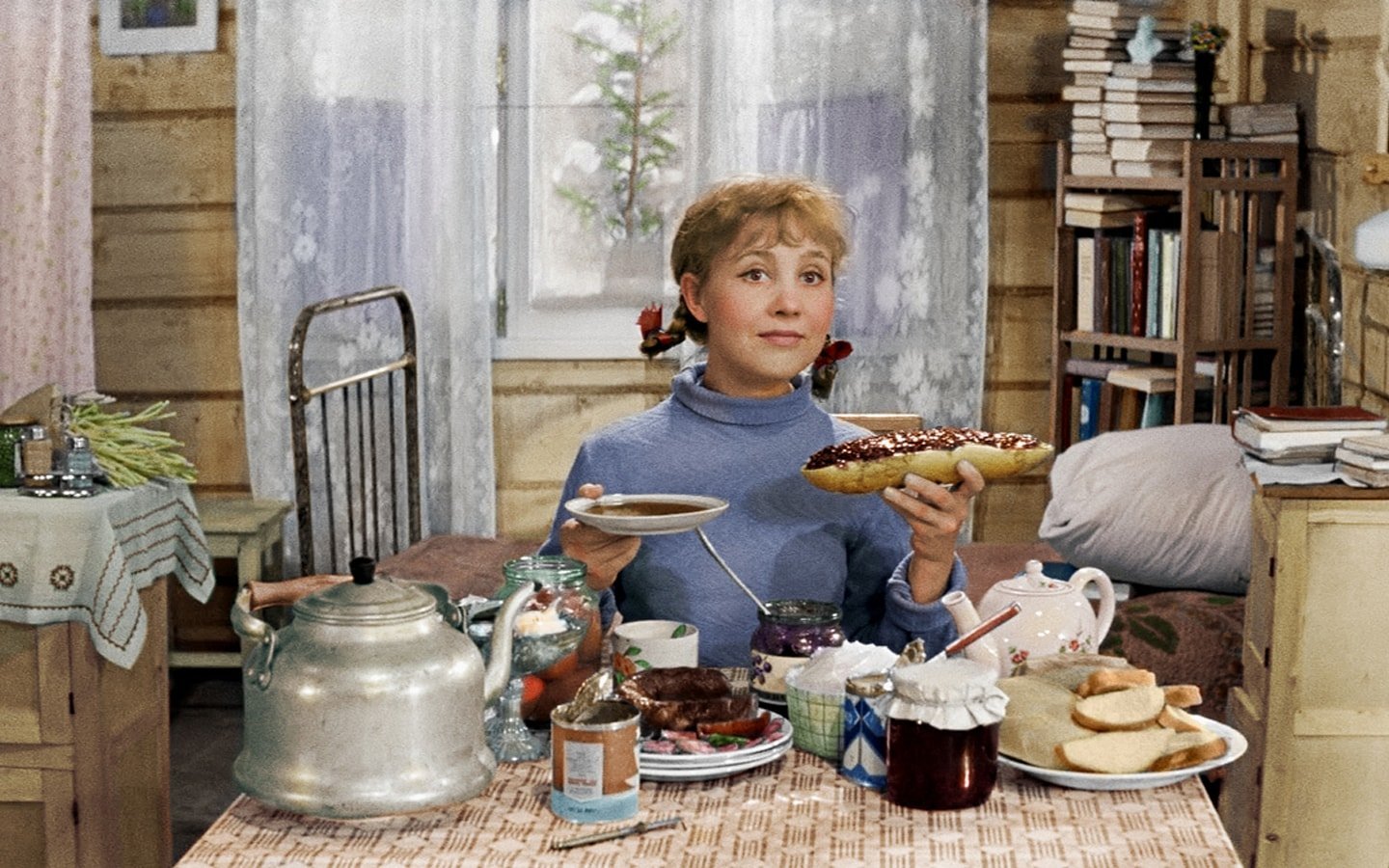The rules of life of a Soviet person did not imply the concept of fast food. Any meal is first, second, third, and there is always something for tea. But in fact, in Moscow, Leningrad and other large Russian cities, especially tourist ones, food stalls with take-away food were popular.
Of course, these establishments were not very similar to Western ones. In any case, this was the case until 1934. This year, the food industry in the Soviet Union changed completely. Then Stalin sent his like-minded person and People’s Commissar of the food industry Anastas Mikoyan to the United States to study how public catering is built in the West and what can be borrowed from them. As you can imagine, the trip was successful. And only a few years later, every Soviet person was able to personally check what domestic fast food is.
In this article we will recall the five most important dishes of the Soviet Union that you can try on the street.
Hamburger
The main dish of American cuisine appeared in the USSR immediately after the official visit of the People’s Commissar Mikoyan to the United States. It was prepared using the same methods as in the West. In general, the main thing in the preparation of hamburgers is that the cutlets, which are sold together with buns in special kiosks, are machine-made. Therefore, in 1937, the local food industry in Moscow, Leningrad, Baku, Kharkov and Kiev had to start producing Soviet hamburgers using specially purchased American equipment. But later the buns were replaced with two pieces of bread, between which the cutlet was placed. And by the way, it is clear that the Soviet people liked this option more.
Chebureks
But the main Soviet street food is still chebureks. Moreover, they were once considered a complete meal served in almost every cafe or restaurant. But everything changed in the late 1950s, when the cheburek restaurant “Druzhba” opened in Moscow, which still exists today. The center of Soviet power survived the collapse of the Union, the glorious 90s, the glorious 2000s, and even the first wave of quarantines. Over the long years of operation, it was closed only once, during the coronavirus, and then only for a while. During the years of the USSR, chebureks, like all other Soviet dishes, were made according to a single recipe in accordance with GOST. Their taste, appearance and price were almost the same. You could buy them for 12 kopecks apiece (by the way, a carton of milk cost about the same amount).
-

Photo: social networks -

Photo: social networks -

Photo: social networks
Sausage in dough
The battered sausage is literally our answer to hot dogs. It was already invented in the post-war period, when Khrushchev was faced with the task of rebuilding Soviet public catering from scratch. The experience of Western countries came to the rescue again. Another business trip to the USA – and new establishments where you can have a quick bite to eat opened in Moscow and other major cities. Along with new eateries, new dishes also appeared. One of them is sausage in batter, prepared in the style of the famous American hot dog.
Hot Corn
In the USSR, the process of “cornization” began under Nikita Khrushchev. In the post-war years, in order to save the agricultural sector, he planted all the fields with it. But he successfully coped with the task, and in 1965 it was called the second bread. Later, this cereal turned into another street food dish. Corn was boiled and generously sprinkled with salt. It was sold everywhere: on the streets, at train stations, and even on city beaches. The main thing is to have time to buy a hot one, so that it tastes better.
Pies
In the USSR, even fast food was made at home. One of the most popular formats of catering establishments is pirozhki. By the way, the main one was located in Moscow on Zhdanova Street (now Rozhdestvenka). The range of dishes was limited only to bakery products. But believe me, there was definitely a lot to choose from. Meat pies were considered the most expensive – their price could reach up to 10 kopecks apiece. Sweet products were much cheaper – their price ranged from 3 to 7 kopecks, depending on the filling.
Source: People Talk
Errol Villanueva is an author and lifestyle journalist who writes for The Fashion Vibes. With a passion for exploring the latest trends in fashion, food, travel, and wellness, Errol’s articles are a must-read for anyone interested in living a stylish and fulfilling life.





